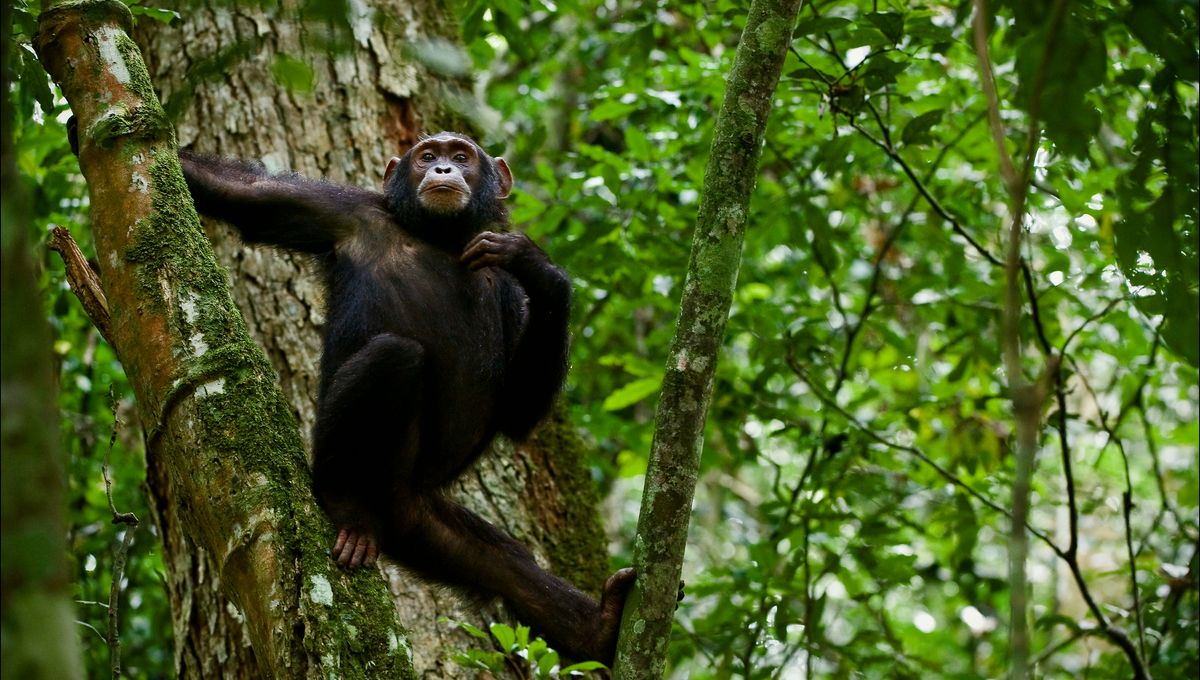
If you’ve ever thrown a ball, climbed a tree, or reached the cereal off the top shelf in the supermarket you could have apes to thank. Research looking into the downclimbing habitats of monkeys and apes has suggested that the shoulders and flexible elbows that evolved in apes helped our ancestors reach the ground without falling, acting as a braking system to prevent gravity from overwhelming their heavy bodies on the way out of trees.
The researchers compared footage and stills of both chimpanzees (Pan troglodytes) and the sooty mangabeys (Cercocebus atys) monkeys as they climbed about in trees. While the manner of going up the trees was similar in both species the researchers noticed that to downclimb, the chimps extended their arms above their heads and the weight of their bodies pulled them down first.
“Our study broaches the idea of downclimbing as an undervalued, yet incredibly important factor in the diverging anatomical differences between monkeys and apes that would eventually manifest in humans,” said Luke Fannin, first author of the study and a graduate student in Dartmouth’s Ecology, Evolution, Environment and Society program in a statement. “Downclimbing represented such a significant physical challenge given the size of apes and early humans that their morphology would have responded through natural selection because of the risk of falls.”
The evolution of free-moving shoulders and flexible elbows allowed apes to get down from trees safely without risking injury or even death by falling from the trees. The team found that the shoulder angle of the chimpanzees was 14 degrees greater during the descent than it was during the vertical climb upwards. The same was true in the elbow as this was extended 34 degrees more when climbing down compared to climbing up in the chimps. By comparison, the sooty mangabeys only had an angle change of 4 degrees or less when climbing down compared to climbing up.
These adaptations would have been passed on from ancestral species to early humans that were thought to climb trees for safety at night before downclimbing in the day.
“Our field has thought about apes climbing up trees for a long time—what was essentially absent from the literature was any focus on them getting out of a tree. We’ve been ignoring the second half of this behavior,” said study co-author Jeremy DeSilva, professor and chair of anthropology at Dartmouth.
Eventually, the early humans developed shoulders capable of a 90-degree angle that allowed for the accurate throwing of spears, a step further than the shoulders of apes that were not capable of this action.
“Climbing down out of a tree set the anatomical stage for something that evolved millions of years later,” continued DeSilva. “When an NFL quarterback throws a football, that movement is all thanks to our ape ancestors.”
The paper is published in Royal Society Open Science.
Source Link: Flexible Elbows And Shoulders Helped Apes Not Fall Out Of Trees